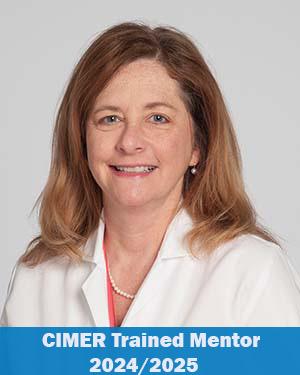Research News
07/24/2024
Blocking src kinase resensitizes triple-negative breast cancer to treatment
Obstructing the key protein creates vulnerability allowing increased treatment uptake for taxane chemotherapy.

Cleveland Clinic researchers have determined the protein YES1 is a key contributor to poor outcomes and chemotherapy resistance in triple-negative breast cancer (TBNC). Blocking this protein creates vulnerabilities in drug-resistant TBNC cells, improving overall survival and reducing harmful side effects for a cancer with few available treatments.
The Cancer Research study was led by Ruth Keri, PhD, whose laboratory researches src kinases, a protein family known to promote cancer when mutated. Analyzing patient data revealed that the src kinase YES1 was highly elevated in TBNC tumors compared to other kinases. TBNC patients with higher YES1 levels in their tumors showed lower treatment responses and survival rates overall.
“Many cancer treatments target all src kinases indiscriminately, but some of these proteins act against each other so blocking them all isn’t always effective,” says Dr. Keri. “Now that we know YES1 is a key kinase driving triple-negative breast cancer, as well as how it works, we can begin to make more targeted treatments.”
“Cancer” is an umbrella term used to describe any disease where abnormal cells replicate uncontrollably. Study co-first author Katrina Piemonte, PhD, an MD/PhD student who recently completed her thesis work in Dr. Keri’s lab, investigated YES1’s role in cell division for healthy and cancerous breast cells to determine how the protein drives TBNC. She found that YES1 is integral to making sure new cells have the correct amount of DNA after cell division.
For our body to make new cells, an established parent cell duplicates its genetic information and divides itself in half to create two new daughter cells. Before division, two molecules called centrosomes are created -- one on each end of the parent cell. The centrosomes act like fishing rods, reeling one copy of genetic material towards themselves at the edges of the cell (see image below). This process ensures each daughter cell receives a full set of genetic information. Having the right amount of DNA is necessary for the cancer cells to continue to grow.

Piemonte’s findings excited study co-author Natasha Ingles, another MD/PhD student in the Keri Lab. Ingles noted that taxanes like paclitaxel, which are the current standard of care treatment for TNBC, disrupt the same step of cell division as YES1 inhibitors by interacting with the “fishing line” that connects DNA to centrosomes.
Ingles tested combinations of taxanes with YES1 therapies in TBNC cells and preclinical models. She found that combination therapy was much more effective at eliminating TBNC cells than taxanes alone. Combining taxane chemotherapy with YES1 inhibitors increased taxane potency even at lower doses, which Ingles says helps reduce the risk of side effects. The team also showed healthy breast cells were virtually unaffected by YES1 inhibitors, further lowering the risk of potential side effects.
“As a physician-scientist in training, my goal is to improve clinical care through my research,” says Ingles. “If you get breast cancer chemotherapy, you're most likely getting taxanes. Our research shows that blocking YES1 makes triple-negative breast cancer more vulnerable to taxanes. My hope is that these findings pave the way forward to increasing the treatment’s effectiveness, while reducing the risk of negative side effects.”
Dr. Keri hopes to conduct clinical trials for YES1-taxane combination therapies soon. Her team is also testing YES1’s ability to combine with other forms of chemotherapy to improve cancer outcomes.
“I'm very proud of my team of diverse researchers, clinicians and data scientists. Everyone had a different perspective and came together to complete this elegant study and establish YES1 as a lynchpin of TBNC,” says Dr. Keri.
Featured Experts
News Category
Related News
Research areas
Want To Support Ground-Breaking Research at Cleveland Clinic?
Discover how you can help Cleveland Clinic save lives and continue to lead the transformation of healthcare.
Give to Cleveland Clinic